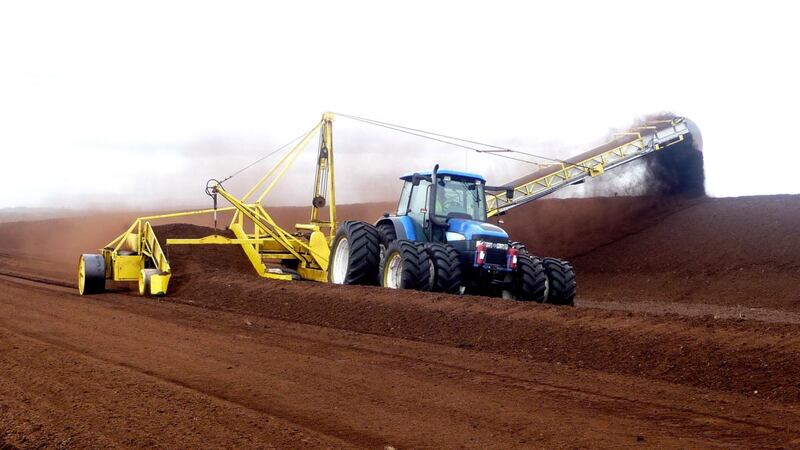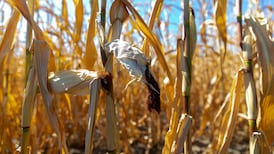Fifteen-year-old Ferbane native Ava Grace Egan may not have the global profile enjoyed by her Swedish hero Greta Thunberg, but she has a similar passion when it comes to tackling climate change.
A third-year student in Gallen Community School in the small Co Offaly town, Egan is one of the founding members of a new group in the school, Gallen Climate Action, which is attempting to improve awareness about climate change among students and the wider community.
Like many, Egan has been inspired by Thunberg, the 16-year-old climate change activist who has enjoyed worldwide acclaim, but sometimes opprobrium, as the founder of the Climate Strike movement.
The young must act, says Egan, because older generations have failed to do so.
“I feel it shouldn’t be up to us because they are the ones in power. They are not doing as much as they should be doing. We are taking it on ourselves because it is so important.”
Being a climate change activist in the heart of Bord na Móna country when hundreds of locals are being made redundant as the company moves away from peat-cutting is a difficult path to take. But these are exceptional times.
Despite its economic interests, there is a growing acceptance locally that change must happen, says Aoibhinn Molloy-Roche, a teacher in Gallen Community School, who moved from Co Clare four years ago.
“If you’d asked me four years ago would that happen in a town like Ferbane, I don’t know. People are intelligent, you have to give them the opportunity to make the decision themselves,” she says.
However, she says teachers in Ferbane tread carefully when they teach students about climate change. “There are a lot of children whose heritage is going out and cutting turf on the bog every summer. We can’t just put all the blame on them.”
Neither can it all be doom and gloom: “We are very lucky, we have solutions but we haven’t been acting on them now. We need to act on them now while we still have time; that’s the message we are sending really.”
Places such as Ferbane need more help to make the changes that are necessary, believes Eoin Lally (15), a classmate of Egan’s and also a founder member of Gallen Climate Action.
“I think it is difficult for people in rural Ireland. Not everyone has the money. Most people in this area rely on turf to keep their houses warm and heat water. People feel like the Government are putting the responsibility on to them to change,” he says. “But it is not as easy as flicking a switch. It’s easy for the politicians who are making loads of money, but people here can’t just start putting solar panels on their houses because they are so expensive.”
The 15km road between Ferbane and Kilcormac cuts through Boora Bog. For seven decades, it has offered work to thousands of locals. Kilcormac, says local secondary school principal Brian Keogh, was “built on the back of Bord na Móna”.
Once upon a time, climate change was an abstract subject but that has changed, he believes.
“We had two school closures last year. When I was in school I can’t remember a school being closed. We had the wind, we had the snow, we’ve also had flooding,” he says.

Students in Coláiste Naomh Cormac held two climate strikes in recent months, organised around their class timetables.
“Students aren’t doing this for the craic, there is a genuine care and concern there,” says Keogh. “I think it is a healthy thing that they feel that they can do something about . . . trying to address that problem.”
We were all bog men. We all burned turf but I actually have a pellet-stove
It’s not only Kilcormac’s young people who are modifying their habits. Members of the town’s Men Shed, some in their 70s and older, have also become conscious of how their actions affect the world around them.
Some still have their own family turf banks in the bogs nearby, but they believe the Government will soon call time upon tradition, says Séamus Barron, who worked as a fitter for Bord na Móna in Boora Bog for 42 years.
Barron is part of a generation of Offaly men with a job for life “in the bogs”. He is sad to sad to see old ways go, but accepts that change is coming.
"Thirty years ago Bord na Móna didn't even know it was doing any harm because there was no talk of climate change. They were only doing good, they were giving employment. Climate change never came into it," he says.
“It’s only in the last 20 years that this has come on board but even without climate change, Bord na Móna was near the end of its life, all the bogs are cut over. We were all bog men. We all burned turf but I actually have a pellet-stove.”
Bord na Móna’s Pat Sammon has attended “countless” gatherings since the firm’s decarbonisation plans were announced last October. This will mean the loss of about 430 jobs by late this year and the closure of 17 active bogs.
Despite the pain to come in an area that has often felt ignored and abandoned by central government, Sammon says “no one has questioned the need for us to take action on this. No one.”
Peat is the worst type of fossil fuel, producing more C02 than anything else. Despite the small role it plays in heating and powering Ireland, it still managed to account for 9 per cent of our CO2 emissions in 2016.
If you are talking about replacing those jobs with herbs and fish farms and things like that, that's not viable in the future
Bord na Móna’s changes are part of “an irresistible momentum behind the need to decarbonise the economy and we cannot stand in the way on that”, says Sammon. “We have to be on the right side of that, people get it. It’s difficult. We can’t sugar coat the difficulty that’s involved in moving from a high-carbon company to a low-carbon company, but that’s the job we have to do and we are doing it.”
The semi-state firm will end peat production in 2027, three years earlier than previously planned and “rehabilitate” 20,000 hectares of peatland throughout the midlands by 2025. In addition, it will shift its attention even more to windfarms and other renewable energies, while it is piloting several other low-carbon businesses such as fish farming and growing medicinal herbs.

Paddy Phelan has been a fitter with Bord na Móna since 1977. Workers were “caught out” by the firm’s announcement last autumn and he is sceptical that the new businesses will offer the same number of jobs.
“Let’s be straightforward. If you are talking about replacing those jobs with herbs and fish farms and things like that, that’s not viable in the future. What people want are jobs that they can pay mortgages with. They are not jobs like that. There’s no point saying it.”
Local Cllrs John Leahy and Eamon Dooley agree with the trade unions that not much planning has gone into life after peat.
“Some people think a lot of funding is coming to the area but they are being codded,” says Leahy.
Are they just going to leave us with wind farms and solar farms and bad roads or are they going to try and invest in this area?
Dooley, a retired Bord na Móna fitter, says that while the people of the midlands are the first to be economically affected by Ireland’s need to reduce its carbon emissions, they will not be the last.
If the people of Offaly and neighbouring counties are “hung out to dry then the next communities asked to make sacrifices will offer greater resistance,” says the Ferbane-based Fianna Fáil representative.
“At the end of the day, people say, ‘we get it’ and ‘we’ll play our part’ but why should we be left behind? . . . Are they just going to leave us with wind farms and solar farms and bad roads or are they going to try and invest in this area?”
‘Incredible opportunity’
Bord na Móna’s decision to move away from cutting peat is an “incredible opportunity” for midland counties to lead on sustainable development, according to a founder of Ireland’s first green regeneration project.
Based on a model that helped revitalise some Welsh mining villages, Green Offaly started work in May and seeks to take over lands and derelict buildings to set up community-owned businesses.
“We are seeing this as an incredible opportunity, it is almost like climate change has afforded us a chance to pivot around,” says spokeswoman Rebekah Keaveny.
“In Offaly agriculture and the power supply industry have been the predominant aspects of the economy and both these streams have been centred on working with the earth. There is no reason why we can’t continue that.”
Offaly has a “natural capital” of bogs that act as carbon sinks and plenty of land for community forests, she says.
“The very things that might have held us back from developing before in the traditional sense are the things that put us in prime position to lead now.”
There is already an example to follow. The largest raised bog restoration project ever undertaken in the State began in 2017 – the Ferbane Bog Special Area of Conservation. Over five years, 12 raised bogs, seven of them in Offaly, are being restored.
The plans for one of these, The Living Bog, include an amenity site in Ferbane complete with a 1km boardwalk loop alongside a woodland walk and other outdoor activities.
“If the project gets the go-ahead – it is currently at the consultation phase – it would enable the people of Ferbane to connect with the bog in a way that hasn’t been done before,” says public awareness manager Ronan Casey.
Everyone in Ferbane previously saw the bogs as useful for jobs or fuel. But the 153 hectares (378 acres) of protected bog is also a home to more than 300 species, many of them rare. This number is expected to rise as the ecological survey continues.
“[It] has a very rare habitat of Sphagnum moss-rich wet bog woodland which had not been recorded until last year,” Casey says. “We hope to be able to bring a walkway close to [it] so it can be studied by schools and appreciated by locals, alike.”
The midlands’ bogs are Ireland’s “greatest weapons in the fight against climate change”, argues Casey. “Raised bogs are Ireland’s greatest carbon stores or sinks. They sequester more carbon than any other landform or object, trees included. Despite the fact they only cover 3 per cent of the earth’s surface they store more carbon than all other vegetation types in the world combined. Bogs that have been substantially cut, milled or stripped are massive carbon emitters.”








